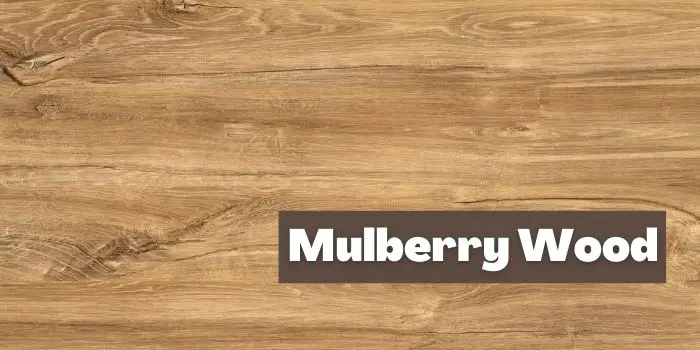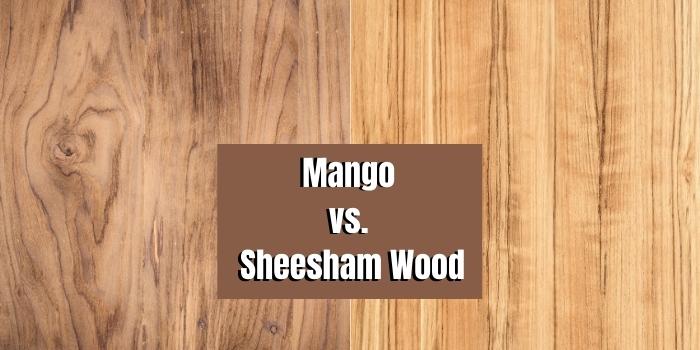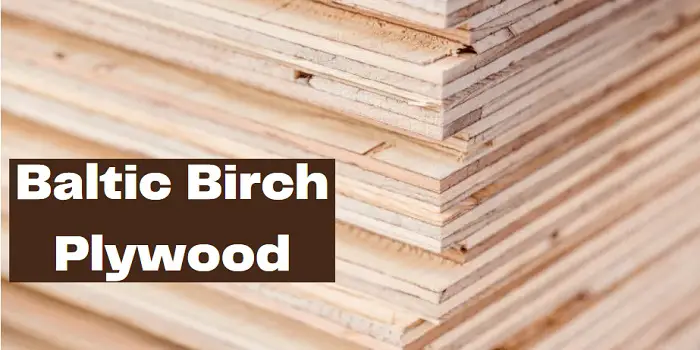
Found mostly in the eastern part of the United States, Mulberry can grow up to 50 feet tall with a trunk diameter that reaches one and a half feet. And while native to the eastern US, you can find the tree in different parts of the world.
While Mulberry has been used for its wood, it is better known for bearing edible fruit. The leaves of the tree are the primary food for the silkworm, which uses it to produce silk.
The tree tends to be mistaken at times for the Osage Orange or the Black Locust. You can distinguish between the trees using a blacklight as the Black Locust is highly fluorescent while the Mulberry is not.
Mulberry Wood
| Scientific Name: | Morus spp. (Morus alba, M. nigra, M. rubra, etc.) |
| Tree Size: | 30-50 ft (10-15 m) tall 1-1.5 ft (.3-.5 m) trunk diameter |
| Janka Hardness: | 1,680 lbf (7,470 N) |
| Type: | Softwood |
| Odor: | No smell |
| Specific Gravity (Basic, 12% MC): | .55, .69 |
| Common Uses: | Furniture and Fence posts |
Appearance
Color
You’ll find the heartwood of Mulberry wood to be a golden brown, which can darken to a reddish-brown over time.
This is due to exposure to UV or ultraviolet rays. The sapwood is white but has a rather pale-yellow tint.
Texture & Grain
This wood has a good natural luster due in large part to the straight grains and uniform texture.
The result is that the wood is very rot-resistant, which includes both weathering and insects.
The grains and texture are strong enough for the wood to hold up against such attacks for some time. However, it is recommended that you treat the wood.
It has no odor that can be discerned. And while it does have the standard allergy risk for dust, there have been few, if any, cases of an allergic reaction to the wood itself.
This means that you can use minimal safety precautions when working with the wood, although eye and respiratory protection are always recommended.
Mulberry Wood Workability
Although durable, the relatively soft nature of the wood makes it quite suited for a wide variety of projects. It works quite well with both machine and hand tools.
Plus, it has a positive reputation for turning. And it will glue well thanks to the pores of the wood being rather large. The wood also finishes well, making it a popular choice.
Because of its availability, you will sometimes find the wood used in specialty shops that make furniture.
It is a popular choice for projects that are outdoors, given its durability and resistance to the elements.
What is Mulberry Wood Used for?
You’ll find Mulberry used for furniture, fence posts, and turned objects. Because of its limited availability, the furniture is mostly from small shops or those who hand-make such furniture.
Although widely available, Mulberry is not normally harvested commercially for its lumber.
This is because of the small size of the tree and how it is scattered across the country, making commercial lumbering operations difficult.
You may find smaller pieces at your local hardware store, but larger boards may be quite expensive due to their lack of availability.
However, Mulberry is not considered endangered as it is widespread. Yet there are no plans in the foreseeable future to grow and harvest the wood for commercial use, given the number of other available trees.

Hi, I am Mark Garner a professional carpenter, woodworker, and DIY painter. I live in the small city of Peoria, Arizona as a semi-retired woodworker. I have started this blog with a simple motive to help you with my wood experience in this sector. If you like to know more about what I love doing and how it all got started, you can check more about me here.




